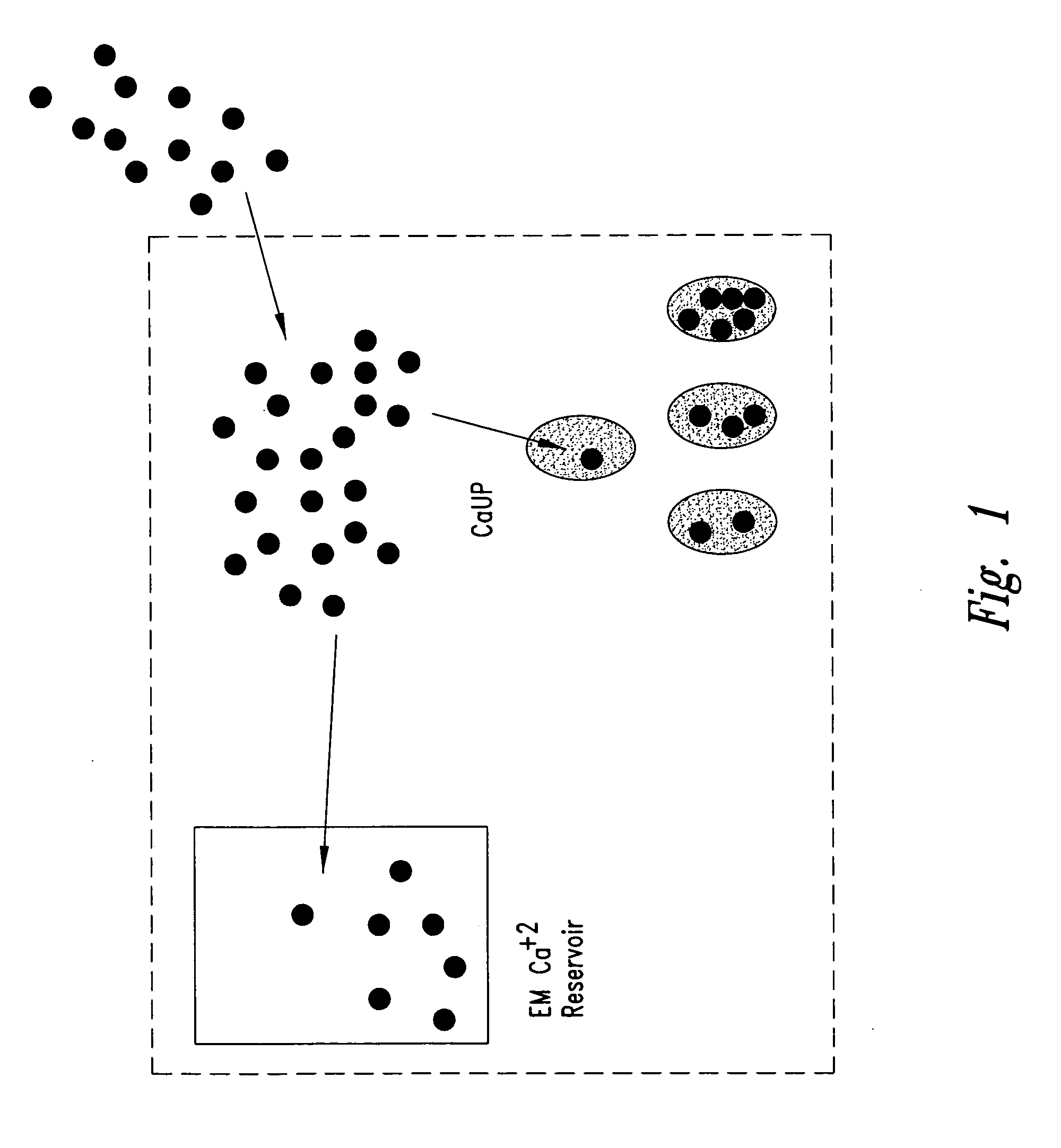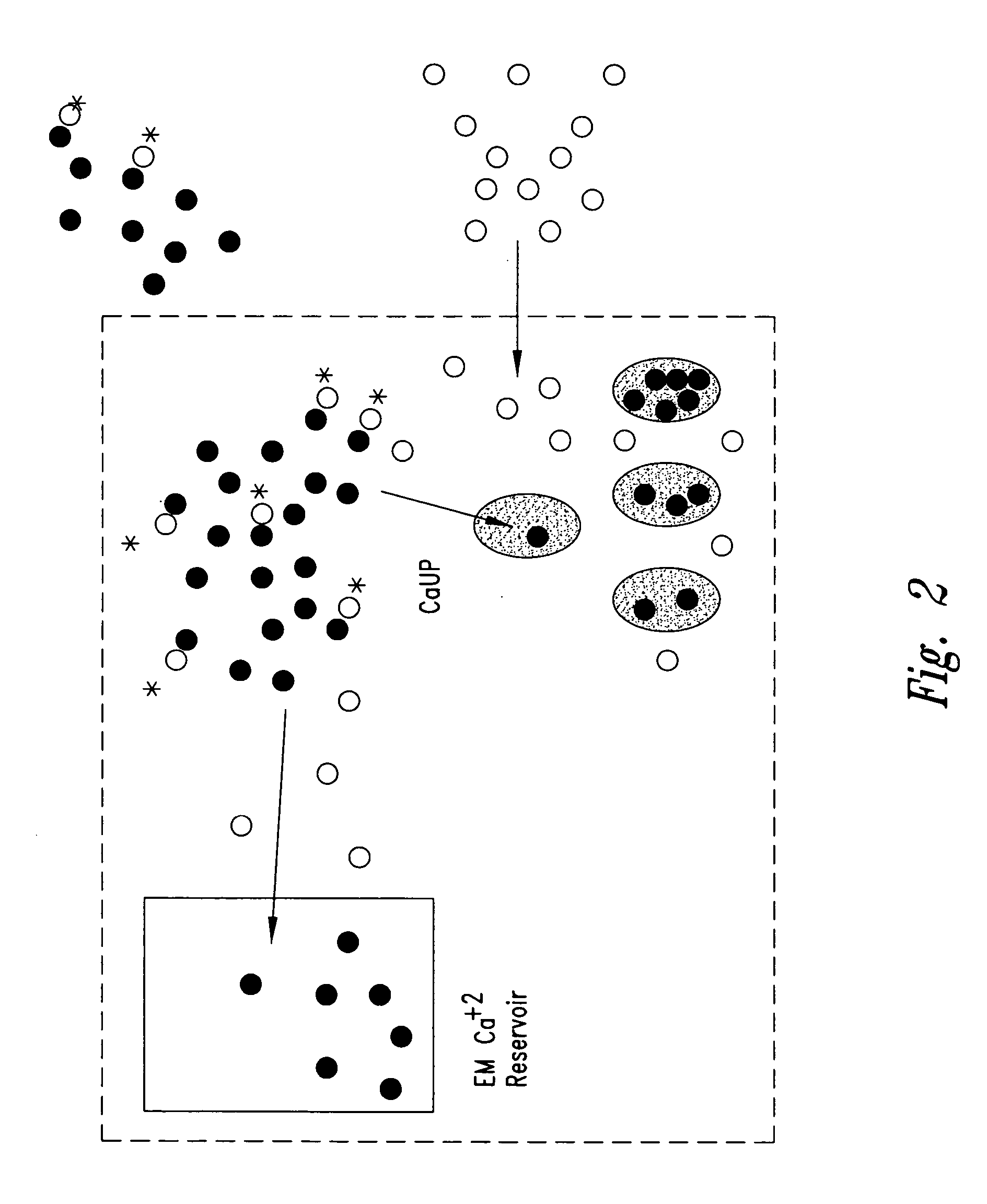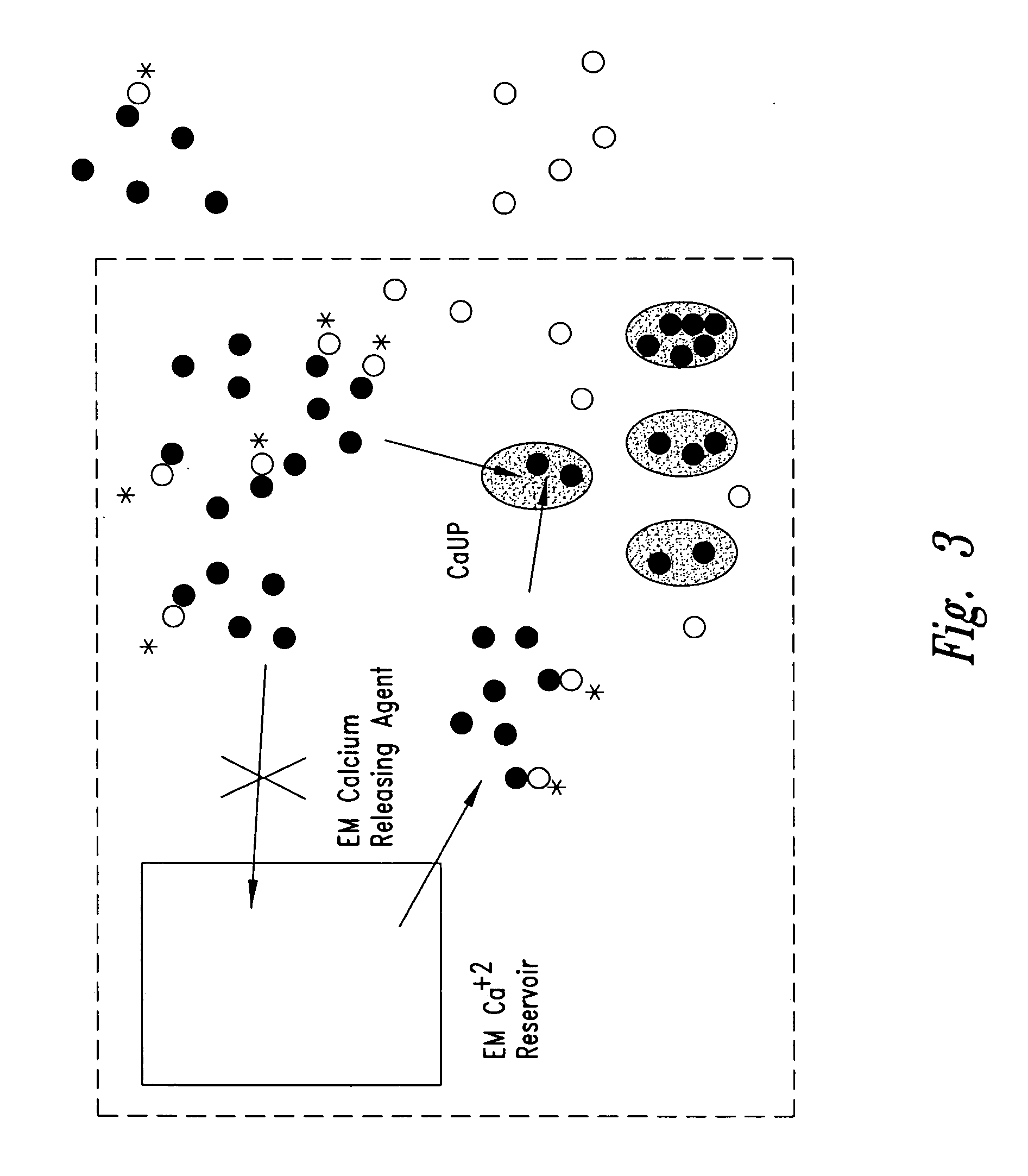Screening assays using intramitochondrial calcium
a technology of intramitochondrial calcium and screening assay, which is applied in the direction of instruments, biochemistry apparatus and processes, material analysis, etc., can solve the problems of compromising the integrity of the inner mitochondrial membrane, uncoupling respiration (i.e., etc. activity) from atp production
- Summary
- Abstract
- Description
- Claims
- Application Information
AI Technical Summary
Benefits of technology
Problems solved by technology
Method used
Image
Examples
example 1
General Assay Reagent, Other Components and Conditions
[0151] Calcium chloride (CaCl2) is commercially available (Sigma, St. Louis, Mo.; C3881). In initial experiments, atomic absorption was done on the stock calcium chloride solution in order to precisely determine its concentration. Autoclaved stock solutions of 0.025 mol / L are available (Sigma, St. Louis, Mo.). The concentration of CaCl2 is important because a difference between 4 and 8 micromolar can be important with regard to inducing spontaneous Ca2+ release from mitochondria.
Calcium-Sensitive Detectable Reagents
[0152] Calcium-Green-5N (potassium salt) is commercially available (Molecular Probes, Eugene, Oreg.; C-3737). Calcium-Green-5N is a low affinity Ca2+ indicator (as is, for example, Oregon Green 488 BAPTA-5N). Low affinity indicators are preferred because of the Ca2+ concentrations used in the assays. High affinity dyes require a lower Ca2+ concentration and therefore a lower number of cells, and thus a low...
example 2
General Assay Protocols
[0177] A master mix solution (MM Solution) was prepared by the addition of 5 glutamate and malate to final concentrations of 5 millimolar each, MgCl2 to a final concentration of 1 millimolar, EGTA to a final concentrations of 0 to 8 micromolar, and Calcium-Green-5N to a final concentration of 0.1 to 1.0 micromolar, to a basic KCl-based respiratory media (“BReM”) that is described in Table 3. Alternative respiratory media can be prepared using sucrose and / or mannitol with or without phosphate buffer. The hexapotassiun salt Calcium-Green-5N (Molecular Probes, Eugene, Oreg.) in the MM Solution is a fluorescent dye that has low binding affinity to Ca2+.
[0178] Thapsigargin (Calbiochem, San Diego, Calif.), a Ca2+ uptake inhibitor of the endoplasmic reticulum (ER), was added to the MM Solution to a final concentration of 1 micromolar to yield a solution designated “MM-T” (ie., Master Mix with Thapsigargin).
[0179] The cell membrane permeabilizing agent digitonin (S...
example 3
Detection of Ca2+ Uniporter Activity
[0183] Assays were performed to optimize the Ca2+ concentration whereby the concentration allows for Ca2+ uniporter transport into mitochondria but is not high enough to induce permeability transition. Stock solutions (10×) of Ca2+ were prepared by addition of CaCl2 to MM-T at final concentrations of 0, 40, 80, 120, 160, and 200 micromolar Ca2+. The cells used in this experiment were a mixture of control cybrids (MixCon) from multiple normal individuals (see U.S. Pat. No. 5,888,498). Cells were trypsinized in Dulbecco's modified Eagle's medium with 10% heat inactivated fetal bovine serum (FBS) and added to wells of a 96-well Costar 3603 microplate at a concentration of about 6×104 cells in 100 microliters per well 48 hours prior to performing assays. Prior to use of the cells, the growth media was aspirated from the wells. One hundred microliters of MM-TD was added to each well to permeabilize the cells. The plate was placed into a Fluorometric I...
PUM
| Property | Measurement | Unit |
|---|---|---|
| molecular weights | aaaaa | aaaaa |
| electrochemical membrane potential | aaaaa | aaaaa |
| wavelengths | aaaaa | aaaaa |
Abstract
Description
Claims
Application Information
 Login to View More
Login to View More - R&D
- Intellectual Property
- Life Sciences
- Materials
- Tech Scout
- Unparalleled Data Quality
- Higher Quality Content
- 60% Fewer Hallucinations
Browse by: Latest US Patents, China's latest patents, Technical Efficacy Thesaurus, Application Domain, Technology Topic, Popular Technical Reports.
© 2025 PatSnap. All rights reserved.Legal|Privacy policy|Modern Slavery Act Transparency Statement|Sitemap|About US| Contact US: help@patsnap.com



